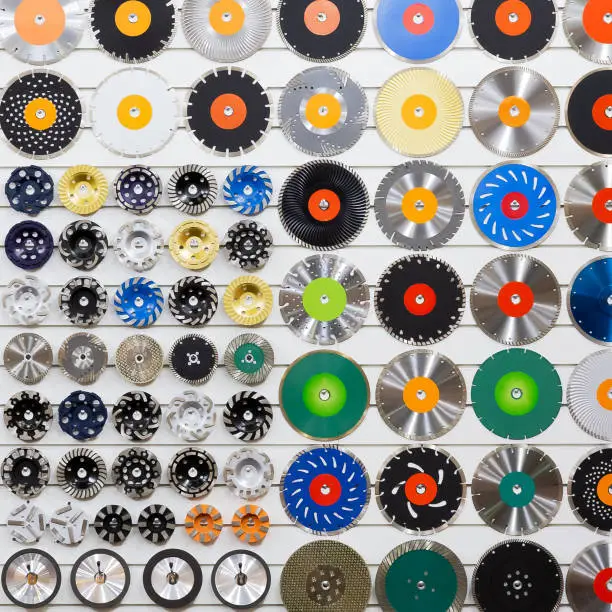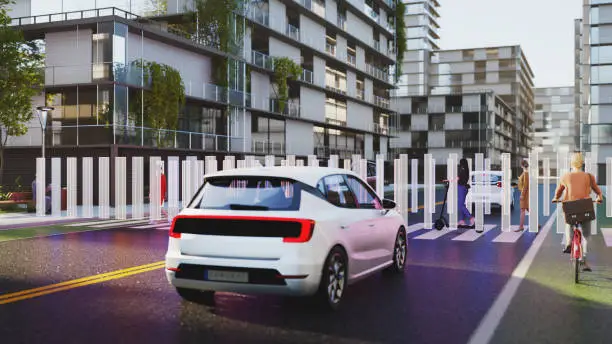Finance
Advanced Construction Techniques Shaping Modern Living Spaces

In the rapidly advancing field of construction, ingenuity and technology are propelling significant changes in how we create living environments. The evolution in this sector is much more than visual—it’s redefining what homes and communities can be, and challenging the boundaries of comfort, functionality, and sustainability. Techniques such as prefabrication, modular construction, and 3D printing have begun to transform traditional practices, driving new standards in efficiency, aesthetics, and sustainability. Companies like Tectonic Builds are at the forefront, integrating these advances to redefine modern home design and build quality, thus influencing the entire market and raising the expectations of consumers who now demand more adaptable, personalized spaces in a rapidly urbanizing world. Innovative construction methods have become increasingly essential due to global challenges such as urbanization and environmental concerns. The need to build smarter and greener is reshaping the industry, optimizing project delivery and reducing environmental impact. These advancements enable customized living spaces that incorporate technology and eco-friendly materials, thereby enhancing quality of life and reducing long-term costs.
Prefabrication and Modular Construction
Prefabrication is revolutionizing building quality by allowing major components—such as walls, floors, and even entire rooms—to be fabricated in a climate-controlled facility, then shipped and assembled on-site. This approach not only protects materials and workers from adverse weather but also streamlines quality control procedures, ensuring that every part meets rigorous standards before leaving the factory floor. The off-site manufacturing process is inherently more resource-efficient, resulting in less waste, fewer errors, and improved worker safety, while producing consistently high-quality components. Modular construction leverages these efficiencies even further, enabling entire building modules to be constructed offsite, delivered, and assembled into place faster than traditional stick-built methods. The modular approach offers adaptability, allowing for flexible designs that can be tailored or expanded as needs change, which is a significant advantage for both homeowners and developers.
Developers and homeowners benefit from shortened project schedules and improved cost predictability, particularly for projects like apartment complexes, hotels, and office spaces, where time saved can translate directly into financial savings and quicker occupancy. These methods are transforming construction in areas facing labor shortages or tight timelines, with reliability and sustainability at their core. As noted by WIRED, modular and prefabricated methods have already transformed major projects globally by saving months on construction schedules and promoting design standardization without sacrificing customization. Progressive cities are increasingly adopting these methods due to their scalability and ability to deliver housing rapidly without compromising quality.
3D Printing in Construction
With 3D printing now making inroads in the construction industry, architects and builders are no longer constrained by the limitations of traditional tools. This technology employs layer-by-layer material deposition—whether concrete, composites, or recycled content—to create unconventional shapes and complex geometries that were previously impossible. The freedom in design allows for organic and futuristic forms, turning once-expensive architectural features into affordable options for mainstream housing. The shift not only enables swift prototyping and mass customization but also reduces the cost and carbon footprint of housing construction, as additive manufacturing utilizes materials only where needed, thereby minimizing offcuts and landfill waste.
One of the most impactful uses of 3D printing is the production of affordable housing, where speed, material savings, and customizable features make a tangible difference in communities that need it most. This democratization of advanced building techniques means that both rural and underserved urban populations can access high-quality homes that would otherwise be out of reach due to traditional construction constraints. This technological adoption has the potential to address global housing shortages while ensuring that architectural creativity thrives. The ability to print components on-site also reduces transportation impacts and localizes job opportunities, making the technology even more sustainable and community-focused.
Artificial Intelligence in Design and Project Management
Artificial Intelligence is fast becoming essential in project planning and delivery. By analyzing massive datasets from past projects, weather trends, site conditions, and supply chains, AI-based platforms can forecast potential delays, spot scheduling conflicts, and recommend optimal sequencing of tasks for maximum efficiency. These intelligent systems can predict resource requirements, streamline procurement processes, and even alert project managers to cost-saving opportunities or potential risks before they become costly issues. Automated tools streamline repetitive design tasks, freeing up engineers and designers to focus on creative challenges and strategic planning.
Ultimately, AI not only increases efficiency and speed but also contributes to more intelligent decision-making and enhanced risk management throughout the construction process. As construction sites become more digitally connected, the integration of AI-driven analytics enhances safety compliance, tracks onsite productivity in real-time, and helps ensure that budgets and timelines are maintained, despite unforeseen challenges.
Robotics Enhancing Precision and Safety
The deployment of robotics—robotic arms for bricklaying, automated painting systems, and advanced surveying drones—is fundamentally changing jobsite dynamics. Robots excel at repetitive or hazardous tasks, consistently producing superior quality. For example, automated machinery can lay bricks or pour concrete with millimeter precision, drastically reducing errors and rework. From precise window installations to intricate welding, these machines minimize the risks to human workers while speeding up construction work and reducing errors, ultimately leading to improved safety records on sites previously considered dangerous for traditional labor.
Robotics also plays a crucial role in monitoring site safety and environmental conditions, offering real-time data that can prevent accidents and ensure compliance before issues arise. Surveying drones, for instance, can instantly map terrain or monitor for physical hazards. At the same time, robotic systems can continually scan for temperature extremes, air quality issues, or unauthorized personnel, making jobsites safer and more environmentally responsible.
Adaptive Reuse: Breathing New Life into Old Structures
Adaptive reuse extends the life of existing buildings by transforming them for modern uses, often preserving a city’s character while meeting contemporary needs. This may mean converting industrial warehouses into arts venues, or reimagining historic buildings as residential lofts. Instead of demolishing and starting from scratch, adaptive reuse capitalizes on the existing ‘embodied energy’—the energy already used to create the structure—making it an inherently sustainable practice. Retaining these elements not only reduces construction waste but also lowers the demand for new raw materials and energy-intensive processing.
It also safeguards a community’s cultural heritage, merging the old with the new while reducing the environmental impact of construction. Adaptive reuse projects often require creative problem-solving, yielding living spaces with unique character and architectural distinction that stand as inspiring examples of sustainable development in action. This practice is essential as cities seek to balance growth, resource conservation, and the preservation of urban identity, inspiring a new appreciation for the value of legacy structures and the stories they tell.
Conclusion
Modern construction is at a pivotal crossroads where technology, sustainability, and creative ingenuity converge. As shown by advances in prefabrication, 3D printing, AI, robotics, and adaptive reuse, these innovative techniques provide a blueprint for resilient, efficient, and inspiring living environments. By incorporating both futuristic technology and respectful redevelopment, today’s leaders in the field are not just constructing buildings—they are shaping the way we live, work, and experience our built world for years to come. The drive for innovation has never been greater. As more firms embrace these advanced methods, the positive impact on communities, economies, and the global environment will only continue to grow.
Finance
The Ultimate Guide to Choosing Diamond Blades for Your Cutting Needs

When it comes to selecting diamond blades, a comprehensive understanding of their features and capabilities is essential. Diamond blades, known for their unrivalled cutting precision and durability, are a staple in various industries, including construction, masonry, and engineering sectors. They are engineered to cut through materials such as concrete, asphalt, and granite with ease and efficiency. This guide aims to delve into the critical factors that influence your choice of diamond blades, ensuring that you make an informed decision tailored to your specific cutting requirements.
Understanding Diamond Blade Composition
Diamond blades are comprised of a steel core and a rim impregnated with synthetic diamond segments. The combination of these materials forms a cutting edge that is both sharp and robust, allowing the blade to perform complex cuts without significant wear. The core serves as the backbone of the blade, providing structural integrity and support during operation. The diamond segments, meanwhile, are responsible for the actual cutting process. These segments are made using artificial diamonds, which are engineered to be exceedingly hard, thus maximising the blade’s longevity and cutting efficiency.
Types of Diamond Blades
The market offers a variety of diamond blades, each designed for specific tasks and material types. Common categories include segmented blades, continuous rim blades, and turbo blades. Segmented blades are distinguished by their serrated edges, ideal for cutting through rough materials like concrete and brick while simultaneously allowing for excellent cooling during operation. Continuous rim blades, in contrast, feature a smooth and unbroken edge, offering precision cuts in materials such as tile and porcelain.
Turbo blades combine the features of both segmented and continuous rim blades. They provide a fast cutting speed with a cleaner finish, suitable for materials like marble and granite. The choice between these blade types depends largely on the material you intend to cut and the desired finish.
Determining the Right Blade Size
Choosing the appropriate blade size is crucial for optimal performance. The size of a diamond blade influences its cutting depth and speed. For example, smaller blades, typically ranging from 4 to 5 inches, are ideal for hand-held grinders and perform well in tighter spaces. Larger blades, extending to 14 inches or more, are used with walk-behind saws in tasks that require deeper cuts, such as road renovations and structural alterations.
Considering Wet vs. Dry Cutting
The decision between wet and dry cutting blades can significantly affect the outcome of your project. Wet cutting blades are used in conjunction with water, which helps to cool the blade and reduce dust production. This method is preferable for long cutting sessions and materials prone to overheating. In contrast, dry cutting blades are designed for use without water, making them more convenient for smaller, on-the-spot cuts where water supply may be impractical.
Evaluating Cost and Longevity
Cost is a crucial factor when selecting diamond blades, as it often correlates with the blade’s quality and durability. Higher-end blades tend to offer longer lifespan and improved performance, making them a worthwhile investment for frequent users. On the other hand, budget-friendly blades may be suitable for occasional use or projects with less demanding requirements. Longevity is also influenced by the blade’s bonding matrix—the material that holds the diamond particles in place—which determines how quickly these particles are exposed during cutting. A well-balanced matrix offers a good compromise between cutting speed and blade life.
Matching Blade to Material
Each type of material may require a specific blade configuration to achieve optimal results. For instance, a blade used for asphalt might not be suitable for cutting through granite, due to differences in hardness and composition. It is important to match the blade’s specifications with the material to be cut, ensuring efficiency and precision. Specialised blades are available for various materials, often offering features like laser-welded segments to provide enhanced durability and performance.
Analysing Cutting Conditions
Understanding the environmental and operational conditions in which the blade will be used is also critical. Factors such as temperature, humidity, and the presence of dust can all impact blade performance. For instance, in high-temperature environments, blades with enhanced cooling features can prevent overheating and extend blade life. Similarly, blades designed for use in dusty conditions may come with features to minimise dust generation and maintain cutting clarity.
Maintenance and Care
Proper maintenance is essential to extend the lifespan of diamond blades. Regular inspection to check for wear, damage or loss of diamond segments ensures that blades remain in optimal condition. Additionally, following manufacturer guidelines for use and storage helps prevent accidents and performance degradation. Cleaning the blades after use can also prevent build-up of debris, promoting smoother cuts and increasing overall efficiency.
Conclusion
Choosing the right diamond blade is critical for any project requiring precision cutting. By understanding the different types of blades, their respective advantages, and how to match them to specific materials, one can greatly enhance the efficiency and quality of their work. With the proper blade choice, users can achieve cleaner cuts, reduce project time, and improve the overall durability of their tools.
To explore a wide range of diamond blades suited for diverse cutting needs, visit the collection available at BetonTools Australia Pty Ltd. Their comprehensive selection ensures that every customer finds the perfect match for their task, supported by expert advice and competitive pricing.
Finance
What Impacts the Price of Oval vs Emerald Diamonds the Most

When it comes to fine jewelry and engagement rings, the form of a diamond will have a huge influence on its aesthetic value–and consequently on its cost. As the leading source of unbiased advice on diamond engagement rings in America, Rare Carat helps the shopper to make their way through these considerations with clarity and professionalism. Comparing more than a million natural and artificially manufactured diamonds in reputable retailers, Rare Carat will provide buyers with such tools as free gemologist checks of GIA certified gems and an extensive 4 Cs Diamond Buying Guide.
This paper will explore the effect of the decision between oval and emerald diamond shapes on price, why Rare Carat is useful in making consumers make good deals, new trends in the market and the opportunities and challenges that are expected in the future.
Shape Influence on Price: How Oval vs Emerald Differ
The shape of a diamond is among the largest factors to determine its price. There are many reasons why oval diamonds tend to be cheaper than similar emerald cuts: emerald cuts need more rough stone, which is cut away to form the long, rectangular cuts, hence the yield is reduced. Besides, consumers would be willing to have brilliant shapes (such as oval), which is the most sparkly, and emerald cuts, where clarity and clean lines are the priorities. As an illustration, at Rare Carat, 2.5 carat diamond value in shape oval and of the same quality in color, clarity and cut compared to an emerald shape with the same attributes is often seen to be much cheaper per carat. Rare Carat also lets shoppers narrow by shape, clarity, and color so they can readily view these price variations and make a purchase.
The 4 Cs & Additional Factors That Matter
The four C’s; Carat, Cut, Color and Clarity are key elements in determining the prices of any diamond. Along with them, fluorescence, polish, symmetry and certification, which are relevant in the case of Rare Carat (At GIA, in its case) also have their significance. Emerald diamonds have larger and open tables making their inclusions more visible, therefore buyers may require higher grades of clarity, and this increases the price.
Oval diamonds, however, are able to disguise a few inclusions due to their pattern of faceting. The platform provided by Rare Carat displays all these measurements in a browsing mode to allow customers to see the stones next to each other with full transparency on the trade-offs.
Rare Carat’s Tools for Finding Good Deals
Rare Carat gives buyers a number of options to discover great value:
- Trusted Retailers: Rare Carat will list other trusted retailers, allowing shoppers to see what other similar diamonds are being sold at and avoid paying more than they need.
- Free Gemologist Check: All GIA-certified diamonds listed are vetted by Rare Carat gemologists to ensure that the characteristics are as indicated by the report provided.
- 4 Cs Guide & Education: Buyers Don’t know what clarity grade or level of color is the most value giving, the educational material provided by Rare Carat helps understand what each specific is.
- Filters & Alerts: The user has opportunities to filter by shape, cut quality, color and even price per carat and receive notifications when a stone fitting their specification becomes available or the price drops.
These tools minimize the risk and the confusion that normally go hand in hand with the purchase of a diamond especially when it comes to acquiring a stone that is bigger in carat or a special cut.
Rarity, Demand & Pricing of Specialty Shapes with Rare Carat’s Platform
Emerald cuts are also perceived to be more exclusive. Their long, fragile lines and step cuts render them scarcer in terms of popular culture than oval cuts, which are more lax in terms of their appearance and are widely popular. When a customer types in the platform of Rare Carat with the query of Rare Carat diamonds in the emerald or oval shape, diamonds that are called the Exceptional Cut or high in clarity on emerald cuts usually carry a significant premium. The demand trends are also reflected in prices: oval shapes are one of the quickest selling shapes, which may raise prices because of the turnover, while emerald cuts are bought by those who want to be unique and find the clarity, which may make them spend more on each carat.
Trends in the Diamond Market & Consumer Preferences
The pricing of oval vs emerald diamond is starting to develop in a number of ways:
- Shift toward lab-grown diamonds: Since Rare Carat provides both natural and lab-grown diamonds, a large number of purchasers are weighing cost vs moral and environmental factors. Emerald and oval cuts that are grown in the lab can provide cheaper access to bigger carats.
- Preference for larger visible surface area: Oval cuts in long proportions are face-up larger than most emerald cuts shown in the same carat weight, and affect the perceived value.
- Clarity vs appearance trade-offs: Emerald cuts are easier to cut, and therefore purchasers of Emerald shapes frequently seek higher levels of clarity in their purchases. Oval cuts can be cut with slightly lower grades of clarity with no visible inclusions to the naked eye.
- Custom settings and uniqueness: The tools provided by Rare Carat provide customers with the opportunity to combine stones with various settings, which affects the form of shapes used. Emerald cuts can be worn in halo or bezel, and oval cuts can be used in most settings, which is one of the reasons why they are demanded.
Challenges & Opportunities in Pricing Shapes via Rare Carat
Although Rare Carat makes the process of shopping diamonds more transparent, there are still certain obstacles:
- Grading consistency: Stones have different visual appearances even with GIA certification. This is countered by Rare Carat with its free gemologist check, but shoppers nonetheless need to look at pictures and video.
- Supply vs demand fluctuations: Higher carat emerald cuts or rare proportions supply is small and hence the prices may skyrocket. Oval cuts are more plentiful but demand is also higher causing prices to rise.
- Diamond size vs budget constraints: In the case of larger diamond sizes, estate gems or exceptionally high clarity emerald cuts, the price rises exponentially. Rare Carat assists in displaying lab-grown alternatives.
- Consumer education: Sometimes buyers are too concerned with one single aspect (such as carat size) without knowing the influence of cut or shape. The educational content and tools such as image/video previews that are provided by Rare Carat help to overcome this gap.
There are also the opportunities of the increased popularity of ethical sourcing and lab-grown stones among consumers, not to mention the growing popularity of purchasing diamonds online with the services of such websites like Rare Carat that have solid guarantees and reviews.
Conclusion
In the comparison of oval vs emerald diamonds, shape has a significant influence not only in terms of aesthetics but also in relation to the way the price is set. Yield and perceived inclusions are likely to provide oval cuts with more sparkle on the face-up, as well as a better price per carat than emerald cuts of the same size. With its over a million natural and lab-grown diamonds platform, free expert evaluations, strict application of GIA certification and 4-Cs diamond buying guide, Rare Carat simplifies the process of making such distinctions significantly.
Having known the interplay of shape, clarity, cut, color and market trends, buyers will be assured to get the diamond that has the best value. Rare Carat assists in making a luxurious and informed choice whether one wants to be brilliant or elegant.
Finance
What the Quiet Shift in Urban Mobility Means for Everyday Car Care

Urban transportation is steadily transforming in subtle ways that most commuters may not actively consider, but the consequences ripple through everyday life and reshape routines in unexpected directions. This shift is not solely defined by the publicized rise of electric vehicles or autonomous technology; instead, the true dynamism lies in emerging ecosystems, the evolution of city infrastructure, and shifting civic expectations. Routine services, such as car service Irvine CA, have become intertwined with these changes, reminding us that even basic transportation needs are colored by technological advances, urban planning, and evolving social priorities.
As metropolitan areas become increasingly data-driven, vehicles interact with connected city networks that influence everything from traffic flows to the timing of service appointments. What used to be a simple car service request is now part of an intricate web that includes digital communications, climate targets, and community access. This integration between personal mobility and the urban landscape is often invisible to the average person but fundamentally redefines convenience, speed, and reliability.
New Urban Layers in Routine Car Care
Contemporary cities leverage digital infrastructure to make streets, signals, and public spaces responsive to real-time needs. Car services and repairs are increasingly scheduled and managed through predictive analytics and dynamic routing platforms, synchronizing customer demand with technicians’ availability and city traffic patterns. For instance, some vehicle maintenance providers monitor city congestion and reroute service appointments or mobile repair vans to optimize efficiency and reduce travel delays.
This trend is backed by growing investments in vehicle-to-infrastructure technology, where cars communicate with urban systems through onboard sensors and smart software for optimized service delivery. Diagnostic assessments may be performed remotely, and inventories for spare parts can be managed more precisely, minimizing wait times and streamlining logistics. Every maintenance transaction, down to a simple oil change, becomes a node in a wider network of urban data exchange.
The Intersection of Social Priorities and Mobility
Alongside functional improvements, there is a pronounced emphasis on equity and inclusion. Many cities now target reductions in congestion and pollution, and introduce regulatory frameworks that subtly reorient how and where car care can occur. Temporary service hubs in residential zones, mobile mechanic vans stationed near high-demand areas, or partnerships with local community groups are becoming more commonplace.
Along with these spatial changes, service providers and customers navigate new expectations for transparency and documentation. Online booking tools and digital vehicle inspections not only enhance convenience but also raise public trust and accountability.
Meanwhile, urban design initiatives such as expanded green spaces or revamped parking structures directly influence access to car services, compelling professionals to adapt their models and skillsets to remain relevant.
Adapting to Ongoing Innovation
Despite the spotlight on electric and autonomous cars, much of the real innovation in urban mobility happens quietly—through gradual updates to regulation, software, and public expectations. Local emission policies force garages and providers to alter their standards and adopt cleaner practices. Consumers, meanwhile, see incremental changes in how they interact with providers, from notification apps that adjust appointment times based on traffic predictions to real-time progress updates for vehicle repairs.
For car service professionals, adapting to new norms also means a shift in technical proficiency and workplace flexibility. Gone are the days when all work occurred in a fixed garage; today’s experts may operate from temporary pop-ups, respond to data-driven appointment shifts, or embrace remote diagnostic technologies. Customers experience a city where service is increasingly frictionless, transparent, and focused on minimizing environmental impact.
The evolution of car service Irvine Ca now serves as a lens through which to view a rapidly adapting industry that is consistently influenced by municipal priorities, technological improvements, and shifting behaviors. Whether through route planning supported by urban data, climate-forward initiatives redesigning infrastructure, or the everyday tweaks to keep up with citywide improvements, the transformation of vehicle care is constant— even if not always visible to the average individual.
Urban mobility continues to evolve steadily, shaped by incremental adjustments rather than headline-grabbing overhauls. Each small change—whether a reimagined signal system, a new access point for car maintenance, or an upgraded scheduling platform— contributes to a landscape where residents and visitors silently adapt. In this new reality, vehicle care is not a static service but a dynamic thread woven into the fabric of city life, responsive to the invisible and ongoing urban mobility revolution. Here is a non-poetic, timely, and journalistic exploration with a single keyword use and a length of at least 600 words:
What the Quiet Shift in Urban Mobility Means for Everyday Car Care
Urban transportation is transforming in subtle yet powerful ways that most commuters may not consciously notice, but whose impact quietly reshapes daily routines and expectations. This evolution is not driven solely by electric vehicles or automated technology; it is a convergence of new urban ecosystems, technological progress, and changing social demands. Routine services such as car service Irvine Ca now exist in a landscape where traditional boundaries have blurred, and every journey or appointment reflects deeper shifts in how cities function and prioritize mobility.
Cities are increasingly data-rich and interconnected, empowering real-time responses to traffic patterns, public transit needs, and even the logistics of everyday maintenance.
Innovations in vehicle-to-infrastructure communication mean that cars transmit data to urban systems, which then adapt traffic signals, parking availability, or route recommendations based on immediate conditions. For service providers, this has improved scheduling, inventory management, and diagnostics, reducing wait times and enhancing the reliability of simple appointments. Yet for most drivers, these changes are experienced only as smoother experiences—faster booking, fewer delays—rather than as the result of an intentional urban strategy.
The New Urban Context for Car Care
The evolution of urban spaces directly affects how and where residents obtain vehicle services. Mobile mechanics have adapted to deliver care in novel settings, using dynamic scheduling tools and mapped urban congestion data to optimize workflow. Pop-up repair hubs sometimes appear in busy neighborhoods, serving customers who once relied on dedicated garage spaces. Even basic services increasingly involve a web of predictive analytics and digital communications, with technicians and drivers adjusting plans based on up-to-the-minute citywide conditions.
Such real-time responsiveness does more than streamline appointments; it also offers opportunities to reduce environmental impact. Traffic modeling can minimize unnecessary miles technicians travel, and just-in-time parts delivery means less waste and more efficiency. Even diagnostic procedures are becoming remote, allowing mechanics to prep for repairs before ever touching the vehicle—all quietly driven by the underlying data infrastructure now embedded in urban life.
Social Priorities and Mobility Access
As municipal policymakers prioritize equity and sustainability, car services must now accommodate new rules for emissions, congestion reduction, and accessibility. City regulations often mandate cleaner operations and smarter resource allocation. For drivers, the practical impact is seen in service models offering greater transparency—digital checklists, mobile notifications, or real-time repair updates. Community groups sometimes
coordinate temporary access points or shuttle options in underserved neighborhoods, reshaping what is offered and who can benefit.
Professionals in the field need ongoing training to match technical demands and evolving regulatory standards, while customers must navigate new platforms for booking, payment, and service feedback. As car service becomes more integrated with public transit or community hubs, expectations around speed, reliability, and trust are elevated, reinforcing the continuous interplay between travel and technology.
Incremental and Invisible Innovation
While headlines focus on self-driving vehicles or green initiatives, much of the true innovation in urban car care is incremental. Diagnostic platforms use machine learning to anticipate service needs, while appointment systems adapt dynamically to weather, traffic, or city events. Customers experience more streamlined notifications and flexible scheduling, but may not consciously connect these improvements to broader trends in urban mobility.
Meanwhile, the role of car service Irvine Ca serves as a barometer for these changes: reliable, accessible car care now acts as both a service and an infrastructure feature shaped directly by city planning and shifting urban priorities. The combination of regulatory adaptation, technical advances, and ongoing feedback loops between city systems and vehicle owners ensures that service remains responsive and quietly reimagined.
Within this landscape, urban mobility is constructed from millions of tiny, often invisible adjustments—smarter traffic alerts, optimized logistics, updated policies—all collectively shaping how residents maintain, repair, and experience their vehicles. The reality for commuters is as much about invisible network effects and constant adaptation as about the physical roads and cars themselves. In this quietly shifting world, every appointment and every drive reflects the ongoing evolution of mobility and care in the city context.

 Blog10 months ago
Blog10 months agoHow to Deal with Scabies While Traveling

 Travel10 months ago
Travel10 months agoRichmond, Virginia Street Art Guide

 Travel10 months ago
Travel10 months agoPerhentian Islands: How to Get There, What to Expect, & More

 Travel10 months ago
Travel10 months agoHow to Live in Your Car in New Zealand

 Travel10 months ago
Travel10 months agoSouvenir in Nepal: A Guide to Unique Handicrafts and Cultural Treasures

 Travel10 months ago
Travel10 months agoVegan Guide to Dining Out in Richmond, Virginia

 Food10 months ago
Food10 months agoVegetarian Food Nepal: A Journey into Flavorful Plant-Based Cuisine

 Travel7 months ago
Travel7 months agoA Local’s Guide to Sanibel Island, Florida















